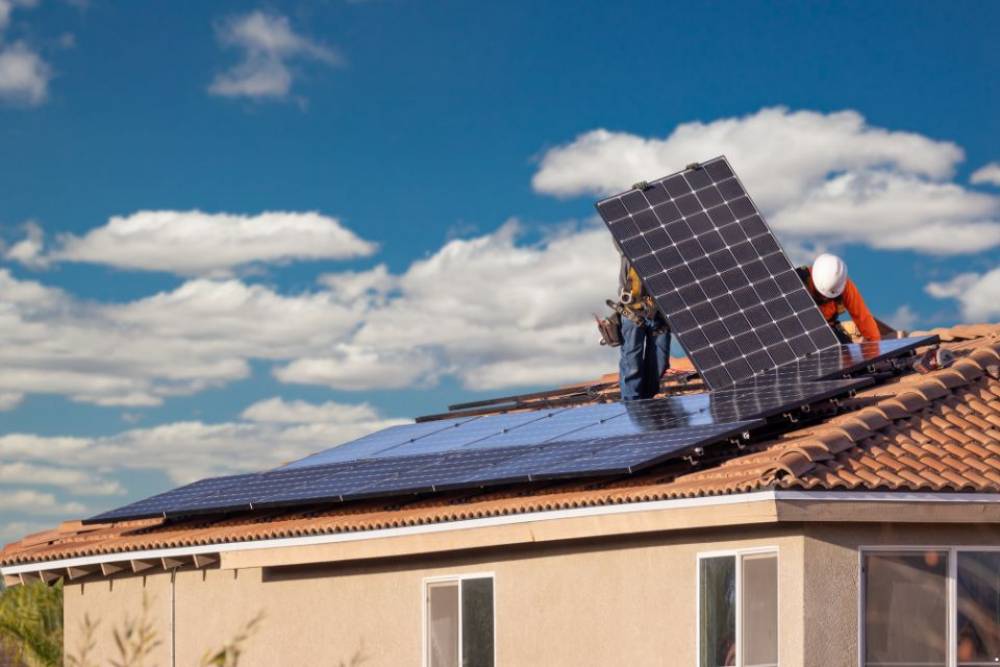
The Impact Of Roof Installation On Your Home's Energy Efficiency
Proper roof installation plays a significant role in determining a home's energy efficiency, which is often overlooked in discussions about energy conservation. An energy-efficient roof not only helps in reducing energy costs but also contributes to maintaining a comfortable indoor environment throughout the year. Factors such as materials, design, and insulation techniques can significantly affect energy usage. We will explore how roof installation by Reign Roofing of West Hills directly affects your home's energy performance and why considering energy efficiency during roofing can lead to long-term savings and environmental benefits.
Importance of Roofing Materials in Energy Efficiency
The type of roofing material chosen for installation significantly affects energy efficiency. Modern materials like metal roofs with reflective coatings or cool roofs are designed to reflect more sunlight and absorb less heat. These materials help keep homes cooler during hot months, reducing the need for air conditioning. On the other hand, traditional asphalt shingles often absorb heat, leading to increased cooling costs during summer. The choice of material also impacts how well the roof retains warmth during colder months, with some materials offering better insulation properties. Materials like clay tiles or slate also have natural insulating qualities, providing aesthetic appeal and energy savings. By investing in energy-efficient materials, homeowners can enjoy lower utility bills and reduced environmental impact, making material selection a critical factor in roof installation.
Role of Roof Color and Coatings
The color of a roof and the presence of reflective coatings can greatly influence energy efficiency. Light-colored roofs, for instance, are better at reflecting sunlight, making them ideal for regions with high temperatures. These roofs reduce the heat island effect, a phenomenon where urban areas become significantly warmer than surrounding rural areas. Reflective coatings, often applied to new and existing roofs, enhance this effect by increasing the roof's reflectivity. Such coatings can lower the surface temperature of a roof by several degrees, reducing indoor cooling demands. In contrast, darker roofs tend to absorb more heat, which may be beneficial in colder climates where heating is a priority. Understanding the impact of roof color and coatings allows homeowners to optimize energy use based on their climate, emphasizing the importance of these factors in roof installation.
Significance of Insulation in Roof Installation
Proper insulation is essential for achieving an energy-efficient roof. Insulation prevents heat transfer between the interior and exterior of the home, helping maintain stable indoor temperatures. Incorporating insulation materials such as fiberglass, spray foam, or rigid foam boards can enhance thermal performance during roof installation. For instance, spray foam insulation creates an air-tight barrier that minimizes heat loss in winter and heat gain in summer. Roof insulation also reduces strain on heating and cooling systems, leading to lower energy costs and longer equipment life. Furthermore, well-insulated roofs reduce noise, adding another comfort layer for homeowners. When planning roof installation, prioritizing insulation ensures energy efficiency and a more sustainable living environment.
Impact of Roof Ventilation on Energy Performance
Roof ventilation is a critical aspect of roof installation that affects energy efficiency. A well-ventilated roof allows hot air to escape during summer and prevents moisture buildup in colder months. Heat and humidity can accumulate in the attic without proper ventilation, leading to higher cooling costs and potential damage to roofing materials. Ventilation systems, such as ridge vents, soffit, or gable vents, facilitate airflow and regulate attic temperatures. This balance enhances energy efficiency and prolongs the roof's life. Moreover, effective ventilation can prevent issues like ice dams during winter, which occur when heat escaping through the roof melts snow, leading to water infiltration. By ensuring adequate ventilation during roof installation, homeowners can improve energy performance and safeguard their investment in the roof.
An energy-efficient roof installation has both environmental and financial advantages. Reduced energy consumption lowers greenhouse gas emissions, contributing to a smaller carbon footprint. Financially, homeowners benefit from decreased utility bills and potential incentives or tax credits for using energy-efficient materials or technologies. Energy-efficient roofs often increase property value, making them a wise investment for homeowners planning to sell. These roofs also tend to have longer lifespans, requiring fewer repairs or replacements over time, enhancing their cost-effectiveness. Understanding these benefits underscores the value of prioritizing energy efficiency in roof installation.
In conclusion, the impact of roof installation on a home's energy efficiency is profound, influencing heating, cooling, and overall energy consumption. From selecting the right materials and colors to incorporating proper insulation, ventilation, and advanced technologies, every aspect of roof installation plays a role in optimizing energy use. Homeowners can enjoy lower energy costs, enhanced comfort, and a positive environmental contribution by focusing on energy-efficient solutions. Making informed decisions about roof installation ensures long-term benefits beyond aesthetics, creating a sustainable and energy-efficient home.

